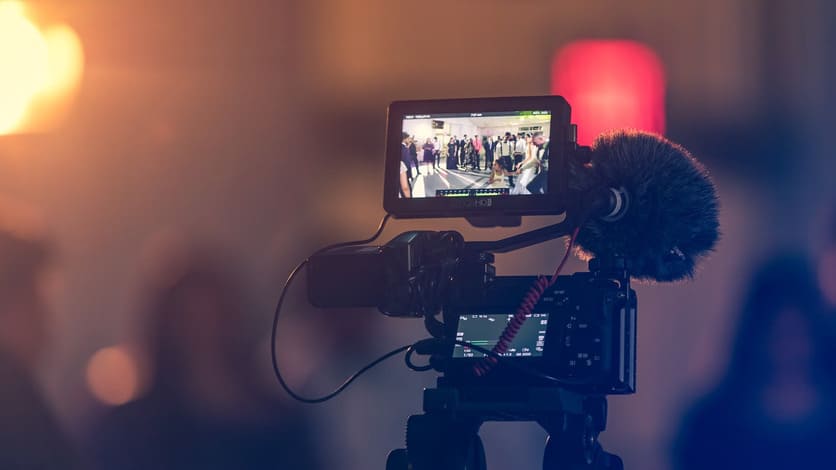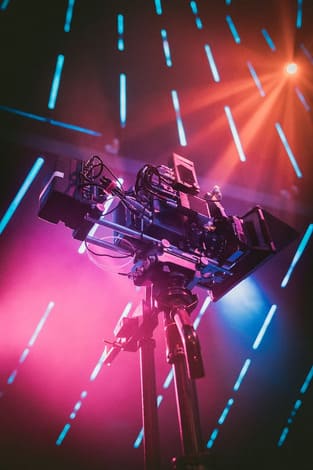The Five Shot Sequence in Film – How It Is Used?
It is often extremely interesting once we start to understand the techniques that go into editing and creating films. The five shot sequence is an editing technique that has been used for decades. But what is the five shot sequence? How is it used to keep us interested while watching films and what sort of equipment is needed to create a five shot sequence in video projects?
Five-Shot Sequence Explained

Ultimately, the five-shot sequence is a form of editing whereby multiple different angles are included within a scene. Often, these different angles are used in order to add a bit more interest to the scene.
The technique was popularized by Michael Rosenblum, a hugely-influential video producer, who has a very impressive resume including working at Voice of America, the New York Times, the BBC, and public TV across Europe. He also founded New York Times Television.
Some people have a specific idea of what the five shot sequence is, while others have a looser definition. But in the Michael Rosenblum example of the classic five shot pattern, the sequence follows a pretty rigid structure.
Five shot sequence examples include the following five shots:
- A shot of the subject’s hands. This is great for a documentary or, for instance, to show what a character is doing. Think about a scene with somebody playing the guitar, the close up of the hands would be the first shot as they move on the fretboard or strum the strings.
- The second shot is a close-up of the subject and their face. This helps to introduce us to the person, explain who is going to be the focus of the shot and open up more possibilities for the director to show things like emotions.
- The third shot is a medium shot of the character, setting more of the scene and showing us a little bit more of the surroundings.
- Next is an “over the shoulder” shot which gives a different perspective of the video and may show another aspect of the film. For example, if we stick with our five shot sequence example of using a guitarist, the next shot may be one over the guitarist’s shoulder looking at the audience.
- The last shot is a big chance for experimentation and it is encouraged to be experimental and story-specific. You may want to show something that helps to move the story along or to give more of an insight. You may switch to a wider shot to give more context to what is happening in the whole shot.
There is some room for experimentation here. If you are putting together a five shot sequence practice assignment then there is every chance that you will stick to the five shots above. This is a good basis for your video. However, rules are there to be broken and there are a lot of different ways that you can approach this.
If one shot doesn’t really work for one of the styles of video you want to make, then you can always replace it with another. You can make the five shot sequence your own and alter what is in the five shot sequence.
When Are Five Shot Sequences Used?

This is a very open question that doesn’t have one specific answer. The five shot sequence is just a tool that you can put into your box of tricks and be ready to use whenever you need to.
Five shot sequences can be used in both fiction and non-fiction videos. For instance, if you look at the Insight Studios portfolio you will see this technique used in videos such as commercials.
Five-shot sequence examples may differ from non-fiction to fiction.
In fiction, there is every chance that the sequence can be used as a tool in the telling of the story. For example:
- To introduce us to a new character, first showing us something they are doing (driving, writing, playing an instrument) and then showing us more about the scene in front of us.
- To show things in more detail. As it includes close-up shots it can show incredible detail we might have missed in other types of shots. For example, you might need to show what a character is writing on paper. The first shots of the sequence could be really good for this.
- For the artistic merit of including lots of different shots and letting people see lots of different angles for the action.
In non-fiction, there are other uses of the five shot sequences. These include:
- Making it more interesting. For example, the next time you watch a documentary where there is an interview shot as a part of it you might notice that the director and post-production team have edited it to include lots of different angles. This helps make it more appealing and engaging for the viewers.
- Showing us what someone is doing. For example, if you think about a cooking show, five shot sequences may be used to first show what a chef is doing, and then to introduce us to the chef and to let them explain in more detail, and to set the scene.
Ultimately, the five shot sequence is a great way for the audience to get a thorough overview of what is going on within a video. It shows different angles, and shows both what someone is doing, and who they are. It may also explain more about the context of a shot. If you are making a video and you are looking for a way to make it more interesting, this method is an excellent tool.
In a lot of videos, the action speaks for itself, but if you have something that is a little bit less interesting in front of your camera then you may want to show things in a bit more detail or make things more engaging.
Now that you think about it, you will probably be remembering many different times when you were watching a simple video, and the filmmakers included things like over the shoulder shots as well as close-ups to make things much more interesting.
Using the Five Shot Sequence Method
When it comes to filmmaking, there are many different things to consider when it comes to using the five shot sequence method.
It is largely put into use at the editing stage, when the filmmakers will have the chance to tie all of the footage together, but this doesn’t happen unless the whole crew have thought about it long in advance.
In the pre-production stage, it is important to plan out all of the different types of shots that will be used within the video, and the angles that you need to collect as a filmmaker. Storyboarding is a vital step in pretty much every video that you could think of making, and at this stage the camera angles and shot types are demonstrated along with the way that the video will actually move from one shot to the next.
Having a storyboard means everybody has a framework to start with. Things may change throughout the video shoot, but sticking as much as possible to the storyboard increases the chances that you will have enough footage.
When actually shooting the video, it is crucial to make sure that enough footage has been collected from all of the different angles. For example, it is possible that not all of your footage will be usable. To tackle this, always take more than you could possibly need. This may also include shooting things multiple times and even tweaking the angles to give you more choice when it comes to editing.
The “Five Shots, Ten Seconds” Rule
When asking the question of “what is five shot sequence?” you may also find people asking about “five shots, ten seconds”. This is another interpretation of the rule and technique that may also be useful.
The five shots in question are usually similar, but adding the “ten second” element gives a little more time for development. This rule says that each of the five shots should be shown for at least ten seconds. This means that at least 30 seconds of footage for each of the angles should be shot as this gives you plenty of choice and accounts for the fact that not all of the footage will always be usable. Giving each shot at least ten seconds can let the technique have the maximum impact.
Summary of the Five Shot Sequence
This is one of a huge variety of tools that can be used in the world of filmmaking. Editing techniques and conventions have grown and improved over time, giving people more options for how they want their video to look. The five shot sequence rule can definitely add interest and engagement.
Our expert team of filmmakers and editors are used to implementing the best techniques in the film industry, and this includes the five shot sequence. From the earliest stages of planning to delivering a spectacular finished product, our team can guide every step of your video production. Reach out to us today and let our team turn your video dreams into reality before your eyes.